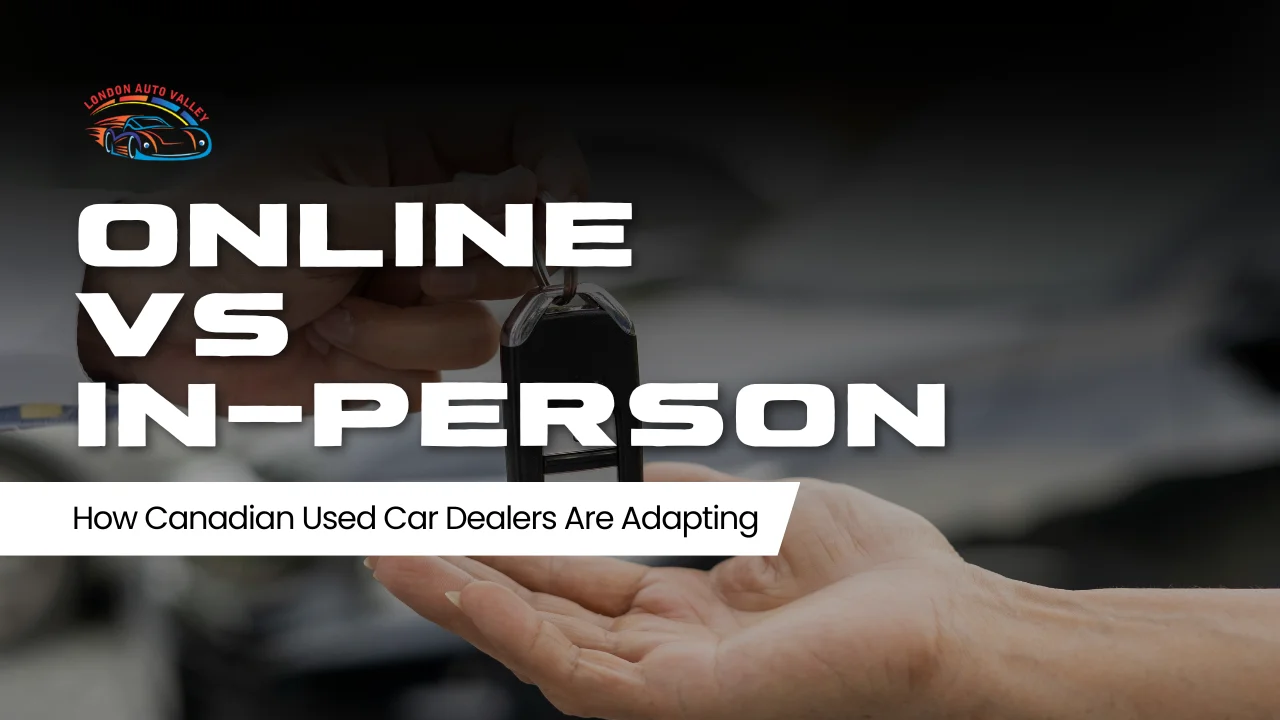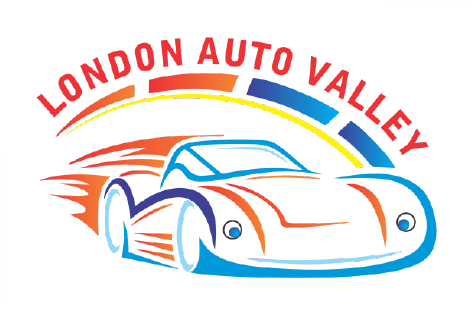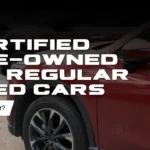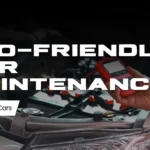

Online vs In-Person: How Canadian Used Car Dealers Are Adapting
In the last ten years, the car market in Canada has changed a lot. Technology is affecting all businesses, so online used car dealers are now important players in the industry. What does this mean for traditional dealerships? Are physical stores still needed in today’s digital world?
Canadian buyers now want more convenience, transparency, and speed. It’s not just about picking a car anymore; it’s also about how and where they buy it. This change has led to one of the biggest shifts in the used car market.
This is a conversation that both Canadian car shoppers and dealers must pay attention to.
The Rise of Online Used Car Dealers in Canada
Online car buying is more than just a trend; it’s a growing industry that matches how modern consumers shop. Many Canadians now enjoy the convenience of looking at cars, comparing prices, arranging financing, and even having cars delivered, all from home.
Why Online Platforms Are Growing:
- Access to many vehicles anytime and from anywhere
- Virtual tours and 360-degree images that mimic in-person checks
- Fast online financing options
- Home delivery of cars, often for free
- Easy online trade-in evaluations
Dealers across Canada are launching virtual showrooms alongside their physical stores. Platforms like Canada Drives, Clutch, and AutoTrader are changing how people find and buy used cars. With user-friendly designs, quick search tools, and detailed vehicle information, online used car dealers provide a smooth experience that competes with traditional dealerships.
In-Person Car Shopping in Canada: Still Relevant?
In-person car shopping in Canada is still important, even with the rise of digital options. While city buyers may prefer the ease of online shopping, many Canadians, especially those in suburban and rural areas, appreciate the personal touch of shopping in person.
Benefits of In-Person Shopping:
- Test drives to check performance, comfort, and features right away.
- Direct interaction with knowledgeable staff.
- Opportunities to build trust through face-to-face communication.
- Negotiations that can lead to better deals on the spot.
- Hands-on inspection of the car’s exterior, interior, and engine.
Buying a car is often an emotional and long-term choice. Many people feel more confident making a purchase after experiencing the vehicle in person. They also value the ability to speak directly with a dealer and ask questions.
The Pandemic Pivot: What COVID-19 Taught the Auto Industry
The COVID-19 pandemic changed many industries, including automotive. In Canada, showroom and dealership closures forced businesses to quickly adapt and go digital.
During this time, new practices emerged:
- Contactless test drives with scheduled drop-offs
- Virtual consultations on platforms like Zoom and FaceTime
- Digital paperwork to avoid in-person meetings
- Click-to-buy systems for remote purchases
What was once a convenience became essential. As lockdowns ended, many of these solutions stayed because customers liked them. Dealers recognized that modern buyers wanted flexibility and adjusted their services accordingly.
How Dealers Like London Auto Valley Are Blending Both Worlds
At London Auto Valley, change has been proactive and forward-thinking. As a top choice in Canada for reliable used cars, they offer a unique approach that benefits buyers.
What Makes Them Unique:
- An updated online inventory with real-time stock information
- Easy pre-approval finance options on their website
- Detailed car pages with specifications, photos, and CARFAX links
- A friendly in-person team that provides honest help
- COVID-safe policies for cautious shoppers
They understand that not everyone wants the same experience. Some customers prefer online shopping, while others like to talk in person. London Auto Valley provides both options smoothly and professionally.
Trust and Transparency in Online Used Car Shopping
One major challenge for car dealers who use online is building trust. Buyers can’t see or test the car in person, so they depend on the dealer’s honesty and reputation.
Here’s how online used car dealers build trust:
- Detailed reports on the car’s condition, including mileage, accident history, and wear
- Certified inspections by third-party mechanics
- Clear pricing with no hidden fees
- Prominent customer reviews and testimonials
- Return or exchange policies for extra reassurance
This focus on accountability has pushed online platforms to improve. As a result, consumers now enjoy better standards and guarantees in the industry.
The Role of Technology in Shaping Car Buying Behaviour
Technology now drives car buying decisions. Buyers usually spend hours online before going to a dealership, looking at models, reading specifications, comparing deals, and applying for financing.
Some popular tech tools include:
- AI search filters that suggest cars based on a buyer’s lifestyle
- Augmented Reality apps that let customers see a car in their driveway
- Instant trade-in calculators that use current market data
- Online chatbots and live agents to help visitors in real-time
- Online scheduling for test drives and showroom visits
These tools mean the buying journey often starts long before customers arrive at a dealership, and sometimes it ends without them ever visiting one.
Hybrid Dealership Models: The Best of Both Worlds
The best dealerships use a hybrid approach that combines online and in-person services. This method attracts more customers and allows businesses to connect with them both online and in-store.
Hybrid Model Features:
- Book online and pick up or test drive in person
- Sign digital contracts remotely with ID verification
- Receive video walkthroughs via email
- Get help from dedicated customer service reps both in-store and online
- Choose flexible delivery or showroom pickup based on what the customer prefers
This hybrid model is becoming the new standard. It gives buyers the confidence to shop in person while using efficient digital tools. For dealers, it helps reach more customers and keep them coming back.
Consumer Preferences: What Canadians Really Want
To create better experiences, it’s important to know what customers want. In Canada, customers expect:
- No pressure when browsing; they don’t want aggressive sales tactics.
- Quick communication through chat or text.
- Clear pricing that includes taxes and fees.
- Easy access to vehicle histories, maintenance records, and ownership details.
- Various payment options like bank transfer, credit, or financing.
Online used car dealers that offer these features do better than those that don’t. However, many shoppers still prefer in-person car shopping for detailed conversations and vehicle walkarounds.
The Future: What’s Next for Canadian Used Car Dealers?
The future of buying cars in Canada will focus on customer experience. Dealers need to adapt quickly to new preferences by using technology while keeping personal connections.
Emerging Trends:
- Mobile apps for shopping that use AI to suggest options
- Blockchain technology for tracking vehicle history
- Self-service options for scheduling test drives and tracking deliveries
- Eco-friendly car choices, like hybrids and electric vehicles
- Digital loyalty programs to keep long-term customers
Businesses like London Auto Valley are getting ready for these changes by investing in better infrastructure, digital marketing, and customer service improvements.
Embracing the Evolution of Car Buying in Canada
Whether online or in-person, the goal is to help Canadians find the right vehicle at the right price with minimal hassle. Used car dealers across Canada are changing how they connect buyers with cars, making the process smarter, safer, and easier.
It’s not about picking between tradition and innovation; it’s about blending both. Dealers like London Auto Valley show that this approach is not only possible but also profitable.
Add a comment Cancel reply
Categories
- Blog (19)
Recent Posts
About us

Related posts


Certified Pre-Owned vs. Regular Used Cars: Which is Better?

Eco-Friendly Car Maintenance Tips for Used Cars









